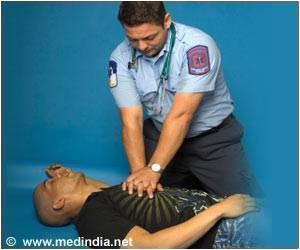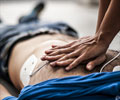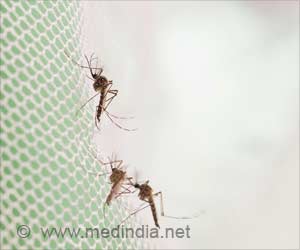If you see a passerby suffering from heart attack, what will you do? Call and wait for an ambulance or give the patient a CPR till the help arrives.

‘Any tragedy can account for success or failure within the first 10 minutes of medical attention.Quick and the timely help such as CPR rendered in this golden period would ensure that the victim is nearly saved so that appropriate treatment can be made available from the nearby hospital.’





In India, a sudden cardiac arrest is a major cause of death due to cardiovascular diseases (CVD), and shockingly 60 percent of the people who suffer a sudden cardiac arrest succumb to it even before they reach the hospital, the survey, conducted in 2016, showed. The need of the hour is to make CPR training a must in schools and colleges and even at community level, as it can triple a patient's chance of survival if performed in the first few minutes of cardiac arrest, health experts said.
CPR consists of using chest compressions and artificial ventilation to maintain circulatory flow and oxygenation during cardiac arrests and is the cost-effective way to improve survival.
"In case of sudden cardiac arrest, the mortality is very high -- almost 90 percent or more if not resuscitated within 10 minutes," Neeraj Bhalla, Director and Senior Consultant Cardiology at BLK Super Speciality Hospital, New Delhi, told IANS.
The American Heart Association (AHA) defines CPR as an emergency procedure to restore spontaneous blood circulation and breathing in a patient and, especially, if performed immediately, it can double or triple a cardiac arrest patient's chance of survival.
Advertisement
The AHA recommends uninterrupted chest compression (100 chest compressions in a minute) to the patient until para-medical support is given, which helps in supplying oxygenated blood to the brain and preventing death.
Advertisement
"The use of AED -- used to diagnose life-threatening arrhythmias or irregularity of heart rhythm -- can also be used to treat a dying heart by using electric shock to revive the heart's rhythm," Vanita Arora of Max Super Speciality Hospital, Saket, New Delhi, told IANS.
The device is easy to use, and with some basic training, it can easily be operated by a layman.
However, "it is not available in most places, unfortunately. An AED machine should be there at every place where there's a fire extinguisher. That's how important a role it can play in saving lives," Arora noted.
"The government can also come out with campaigns and such training should be given to all and sundry. Government and private hospitals should also be roped in to provide training, apart from making it compulsory in schools and colleges. Besides, NGOs can also be of great help in such an initiative," Majumdar added.
The experts also noted that most people fail to identify when a person is suffering cardiac arrest.
"A person suffering cardiac arrest will show the following symptoms: pain in the chest, palpitations or shortness of breath, collapse due to loss of consciousness and, most critical, no detectable pulse. The last two are very easy to detect and are almost clear signs of cardiac arrest," Arora emphasized.
"When you see a person faint or become unconscious gasping for breath, the first thing is to check the pulse or beating of the heart. A person suffering from sudden cardiac arrest will not have a detectable pulse, which means he has only seconds to survive. The next step is to call emergency medical service immediately. Almost simultaneously, the person should begin performing CPR," she noted.
At the same time, proper heart examination should be made part of the routine health check-up among the people in the country. People get heart check-ups like ECG and angiographies done only when they face problems like chest pain or any other symptom of heart attack or cardiac arrest.
One should never ignore unexplained weakness, tiredness, first onset chest burning or first onset breathlessness after the age of 40. Those with a strong family history of heart disease should get themselves screened, the doctors said.
Leading a healthy lifestyle -- including a daily exercise routine, eating healthy food and avoiding stress, adequate sleep -- is good for maintaining a healthy heart.
It must be made mandatory to teach CPR to all students, office-goers, security personnel and almost every citizen of the country, the experts said.
Source-IANS











